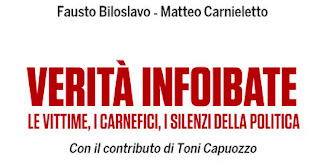Professione: Scientist
Luogo: Dalmatia
Autore: Prof. Antonio Fares
Ruggero Giuseppe Boscovich (Zara, 18th May 1711 – Milan, 13th February 1787) was the greatest Dalmatian scientist of every time.
He was born in Zara on 18th May 1711, where he had his cultural education. In 1726 he joined the Jesuit order and some years later he became priest in Rome.
Poliedric genius, he was interested in Astronomy, Maths, Physics and Geodesy; his sensitive soul was attracted by poetry too. Elegant and brilliant he sometimes showed a sharp attitude that didn’t spare him disappointments and contrasts. Thanks to his professionalism and his technical competence he got many and respected assignments, both diplomatic and scientific, that he completed brilliantly and with justice.
He was consulted about the reclamation of the Pontine swamps, about the stability of St. Peter’s dome and the spire of the Duomo in Milan. He traveled many times to Paris, Wien, London and Costantinople but for him Italy was always “the original sweet mother”.
Between 1750 and 1753, commisioned by Pope benedict XIV and with Cristoforo Maire, he measured the meridian arc between Rome and Rimini in order to define Earth’s shape and to obtain certain elements to correct Papal State’s maps.
In 1757 he went to Wien to support the rights of Lucca Republic against Grand Duchy of Tuscany on the dispute about Bientina Lake.
Between 1764 and 1768 he taught at the Pavia University and successively in the Palatine School in Milan. In this city he gave the best of himself permanently organising and equipping Brera Astronomical Observatory, founded by Jesuits.
He carried out many measurememts and detections that helped him to correct the common mistakes in the Astronomy of that period. He studied optical phenomena and of celestial physics.
Due to his positive attitude, that consisted in giving priority to a direct observaction instead of abstract mechanicistic theories, he can be considered one of the forefathers of the modern scientific thought and of the Universe atomic theory.
He designed in every detail a telescope filled with water, but the technology of the time was not able to realize it; it was developed in Greenwich in 1871 (84 years after his death!).
In 1773 he left Milan for Venice and from here he went to Paris where he was director of Optics for the French Marine for ten years. In 1783 he came back to Italy, to Bassano del Grappa to arrange his huge studies of Optics and Astronomy.
In 1785 he moved to Tuscany and in October of that same year, invited by friends and disciples he settled in Milan where he died on 13th February 1787.
He was a very productive author and his works were written only in Latin, Italian and French. His friend Voltaire, with whom he had an intense correspondence, wrote to him always in Italian for respect.
Among his varous works we remember: Theoria Philosophiae Naturalis redacta ad unicam legem virium in natura existentium, Wien 1758; De Solis ac Lunae defectibus (latin poem), London 1760; Opera pertinentia ad Opticam et Astronomia, Bassano del Grappa, 1785.
 Language
Language Italian
Italian
